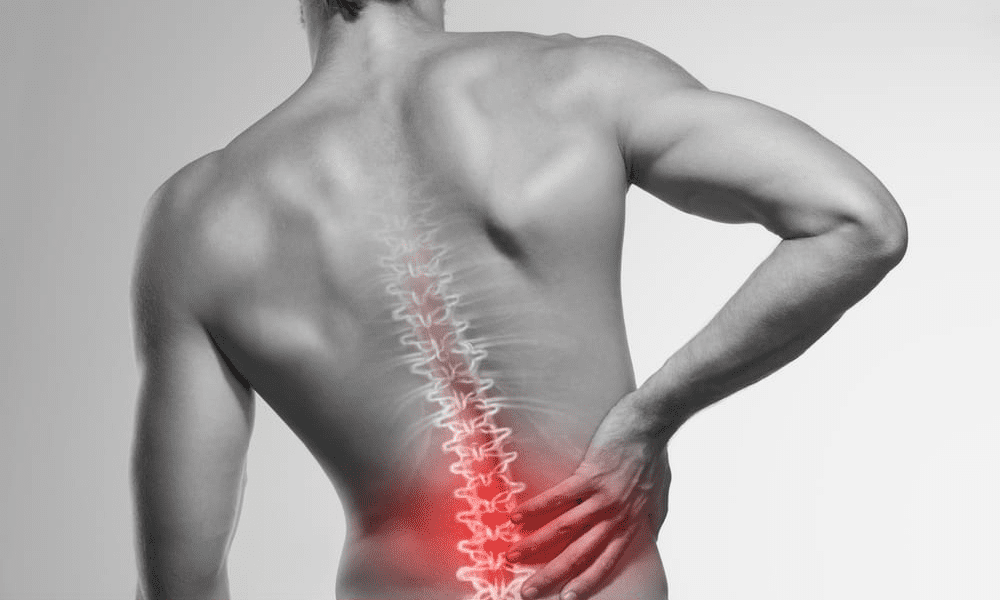Acute Low back pain – the best treatment is at Dr Raos, Guntur
Introduction
Acute low back pain is a common condition that affects millions of people each year. The vast majority of cases will resolve on their own with self-care and home treatment, but some may require medical intervention. This article will provide an overview of the anatomy and physiology of the lower back, as well as common causes and treatments for acute low back pain.
Muscles of lower back
There are several muscles in the lower back that can contribute to pain and dysfunction. The erector spinae is a large muscle group that extends along the length of the spine. This muscle is responsible for maintaining upright posture and can become tight and painful with prolonged sitting or standing. The quadratus lumborum is a large muscle that runs from the pelvis to the ribs and helps to stabilize the spine. This muscle can also become tight and painful with prolonged sitting or standing. The gluteus medius and minimus are muscles in the buttocks that help to stabilize the hip and pelvis. These muscles can become weak and painful with overuse.
Vertebrae and discs of lower back
The vertebrae are the bones that make up the spine and protect the spinal cord. The discs are the cushions between the vertebrae. They help to absorb shock and keep the spine flexible. There are five vertebrae in the lower back: • L1–L5
The discs between these vertebrae are: • L4/5 • L5/S1
The L4/5 disc is located between the L4 and L5 vertebrae.
The L5/S1 disc is located between the L5 and S1 vertebrae.
diagnosis
There are a few different ways to diagnose acute low back pain. The first is through a physical examination. Your doctor will likely ask you to describe your pain, how long you’ve been experiencing it, and what activities make it worse or better. They will also ask about your medical history and whether you’ve had any previous injuries to your back. Your doctor will then do a physical examination of your back. They may check your range of motion, reflexes, and muscle strength. They may also order imaging tests, such as an X-ray, MRI, or CT scan, to further assess the cause of your pain. Once your doctor has made a diagnosis, they can develop a treatment plan to help relieve your pain.
Acute management
Acute management of low back pain generally focuses on the short-term relief of symptoms. In most cases, this will involve a combination of medication and physical therapy. Medication can help to reduce inflammation and pain, while physical therapy can help to stretch and strengthen the muscles in the back. In some cases, surgery may be necessary to correct any underlying problems.
Exercises for acute back pain
There are a few key exercises that can help alleviate acute low back pain. First, start by lying on your back with both knees bent and your feet flat on the ground. Place a small, rolled up towel under your lower back for added support. Then, slowly raise your right leg up into the air, keeping your knee bent. Hold this position for a few seconds, then lower your leg back down to the starting position. Repeat this exercise 10 times on each side. Next, still lying on your back with both knees bent and feet flat on the ground, place your hands behind your head. Slowly lift your shoulders off the ground, contracting your abdominal muscles as you do so. Hold this position for a few seconds before slowly lowering yourself back down to the starting position. Repeat this exercise 10-15 times. Finally, sit on the ground with your legs straight out in front of you and your feet together. Reach forward with both arms, keeping your back straight, and try to touch your toes. Hold this stretch for 30 seconds before releasing and repeating 2-3 times. These exercises are just a few of the many that can help to relieve acute low back pain. Be sure to speak with your doctor or physical therapist before beginning any new exercise routine to ensure that it is safe for you to do so.
Conclusion
In conclusion, acute low back pain is a common condition that can be managed effectively with a combination of self-care, medication, and physical therapy. With proper treatment, most people with acute low back pain will recover fully and be able to return to their normal activities. Looking for the best neurosurgery or back surgery or spine surgery look no further than Dr Raos hospital, Guntur. Dr Rao is the best spine surgeon in India.


